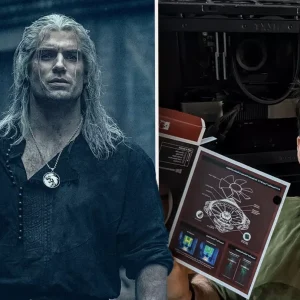Mary J. Blige Extends ‘The For My Fans Tour’ Through End of April – Here's Everything You Need to Know!
The Queen of Hip-Hop Soul is giving her loyal followers even more to celebrate! Mary J. Blige has officially extended her red-hot ‘The For My Fans Tour’ through the end of April, and yes—this is the good news we’ve all been waiting for.
Initially set to wrap up in early April, the tour received such an electric response from fans that Blige had no choice but to add additional dates. Talk about being booked and blessed! The R&B icon is bringing her unmatched vocals and fierce energy to more cities than ever, making sure no fan gets left behind.
More Dates, Same Iconic Vibes
Mary J. Blige has been absolutely killing it on stage, serving soulful performances of her most beloved classics like “Real Love,” “No More Drama,” and “Family Affair,” along with newer bops that prove she’s still reigning supreme in the world of R&B. The extra dates mean fans in new cities—or those who missed out on tickets the first time around—will get a second chance to catch the legend live.
According to tour insiders, the extension includes added shows in high-demand markets, including Los Angeles, Atlanta, Houston, and Chicago. Fans have been flooding social media with #ForMyFansTour content, raving about Blige’s timeless voice, stunning outfits, and emotional connection to the crowd. Let’s just say: if you’re not in the building, you’re missing out on a whole vibe.
The Tour That’s All About the Fans
True to its name, ‘The For My Fans Tour’ is a heartfelt celebration of Mary J. Blige’s decades-spanning career—and a powerful thank-you to her devoted fanbase.
In a recent interview, Blige shared: “This tour is for my people—the die-hards who’ve been with me through every heartbreak, every comeback, and every triumph. It’s all love and gratitude out on that stage.”
And the fans are feeling it. Each show has been a powerful mix of nostalgia, celebration, and soul. From emotional ballads to dancefloor anthems, Mary comes through with iconic look after iconic look (styled head-to-toe perfection, by the way) and the kind of raw, emotional vocal delivery that reminds us all why she’s a living legend.
How to Score Tickets to Mary J. Blige’s 2024 Tour
With the latest announcement, getting your hands on tickets just became the hot-ticket hustle of the spring. Presales for the new dates will go live later this week via Mary J.’s official website and major ticketing platforms like Ticketmaster and Live Nation, with general sales following shortly after. Pro tip: turn on those notifications and be ready the moment they drop—fans are snatching these up fast!
And yes, VIP packages will also be available for superfans who want that up-close-and-personal experience, complete with exclusive merch, early entry, and premium seating. Because if you’re going to do Mary J. Blige, you might as well do it in style.
More Than Just a Tour – It's a Cultural Moment
Mary J. Blige isn’t just touring—she’s cementing her icon status in real time. With her recent accolades, from receiving the Billboard Icon Award to her historic Super Bowl halftime performance, this tour feels like the perfect cherry on top of an already legendary career.
Social media is lit up with praise from celebs and fans alike. From Cardi B to Taraji P. Henson, everyone is filling their feeds with love for the queen. And let’s be real—few artists command the stage with such passion and raw emotion. As fans are saying: If you know, you KNOW.
Set Your Calendars—April Is all About Mary!
Whether you’ve been a fan since ‘What’s the 411?’ or you just recently hopped on the Mary J. train, this tour extension means you’ve still got time to get in on the action. The tour now runs through the end of April 2024, giving fans across the U.S. more opportunities to experience the magic live and in person.
So dig out your Timbs, get your girls together, and prepare to feel all the feels—because when Mary J. Blige hits the stage, it’s more than music. It’s a whole movement.
Stay tuned to Mary J. Blige’s official socials and website for updates, setlists, and surprise announcements as the extended leg of 'The For My Fans Tour' kicks off. One thing’s for sure—this is the event of the season, and you won’t want to miss it.
Search Terms for Fans to Follow:
- Mary J. Blige 2024 Tour Dates
- The For My Fans Tour Tickets
- Mary J. Blige Live Concert April
- R&B Concerts Spring 2024
- VIP Packages Mary J. Blige
- Best R&B Tours 2024
Ready to live your best music life? Get those tickets, warm up your vocals, and prepare for an unforgettable night with Mary J. Blige!
For all the latest pop culture news, exclusive music scoops, and insider updates on 'The For My Fans Tour,' keep it locked here!
Written by: [Your Name]
(Entertainment Journalist | Covering Iconic Moments in Music and Celebrity for Over a Decade)


